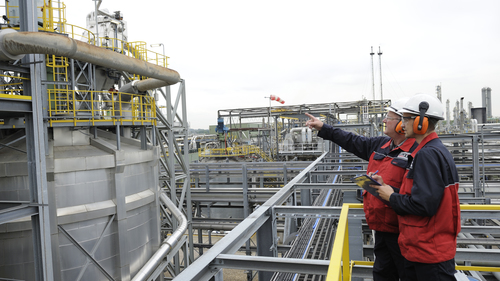
LANXESS has successfully converted its largest production line for Keltan-branded EPDM synthetic rubber to its innovative ACE technology. The conversion was completed on time and within budget, and the new line has a capacity of 95,000 metric tons per year. The ACE process allows LANXESS to deliver a broad range of high-quality EPDM grades with consistent quality, chlorine-free and high degrees of purity. The company has also invested in a new plant in China, which will have a capacity of 160,000 metric tons per year and will also use ACE technology.
Leverkusen - The largest production line for the Keltan-branded EPDM synthetic rubber at the LANXESS’ site of Sittard, Geleen, The Netherlands, has been successfully converted to the company’s innovative ACE technology.
“This is another important step into an even more sustainable future with LANXESS,” said Torsten Derr, Head of LANXESS’ business unit Keltan Elastomers (KEL). “We have also completed this conversion on time and in budget.”
The German pioneer in synthetic rubbers development has invested roughly EUR 12 million to convert the production line from conventional Ziegler-Natta chemistry to its innovative ACE-process. The new line – EPT 3 – has a capacity of 95,000 metric tons per year. This is more than half of the total capacity at that plant. It is currently the world’s largest EPDM plant with an annual capacity of 180,000 metric tons.
“This launch is the result of considerable long term R&D efforts conducted by the EPDM-experts at today‘s LANXESS Business Unit Keltan Elastomers,” explained Derr.
The ACE process, utilizing outstandingly active catalysts, enables LANXESS to deliver an extraordinarily broad range of proven, high-quality EPM and EPDM grades – in consistent quality, chlorine-free and with high degrees of purity. Above that, the process consumes less energy and produces no catalyst waste, what makes a deashing step obsolete.
LANXESS’ current range of EPDM rubbers already comprises seven ACE-grades: “The introduction of these grades from the EPT-3 line is the result of an extensive technology and product validation including several test runs on one of the smaller production lines at the Geleen site,” said Derr. Validation samples of the new ACE grades were tested during a one year period in the market before the start up of the new production line. ACE grades are already being sold to customers.
EPDM is used above all in the automotive industry for door sealants or coolant hoses. According to LANXESS estimates, approximately seven kilograms of EPDM is used in every car. The product is also used in the plastics modification, cable and wire, construction and oil additives industries. Its properties include very low density, good resistance to heat, oxidation, chemicals and weathering as well as good electrical insulation properties.
The ACE process not only offers LANXESS a more sustainable process. It also makes higher value EPDM grades accessible that were beyond reach of conventional technologies. “The ACE catalyst system allows for the production of the complete EPDM grade portfolio, including a wide range of monomer compositions and molecular weights,” said Derr. “Among them are very high ENB grades, for fast vulcanization, and (oil extended) very-high-molecular-weight grades, for excellent elastic properties. Also, the Keltan ACE portfolio continues to take full advantage of LANXESS’ proprietary Controlled Long Chain Branching technology to assure good processability at our customer. High ENB grades, high (oil extended) molecular weight grades and branched grades are difficult to produce with metallocene technology,” Derr concluded.
And the ACE story will be going global soon: “Our Changzhou plant in Jiangsu Province, China, starting up in 2015, will also work with ACE-technology. We are prepared to lead EPDM into a bright future,“ said Derr.
The plant will have a capacity of 160,000 metric tons per year and represents an investment of EUR 235 million, the largest capex project the company has made in China to date.